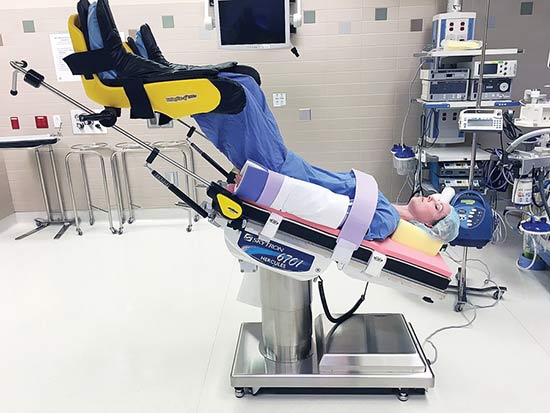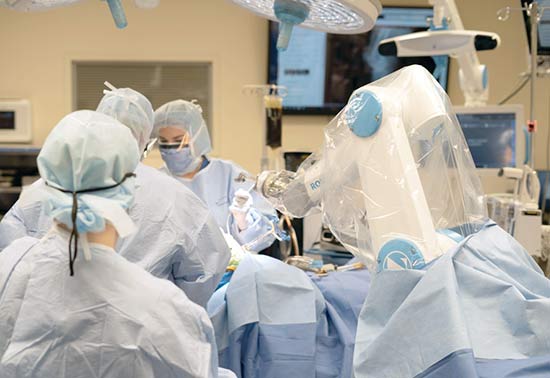Numerous patient safety risks can be mitigated by careful positioning and proper application of safeguards.
 DEFY GRAVITY Patients in steep Trendelenburg face numerous dangerous physical stressors that require careful monitoring and mitigation by the OR staff.
DEFY GRAVITY Patients in steep Trendelenburg face numerous dangerous physical stressors that require careful monitoring and mitigation by the OR staff.
As the popularity of robotic urologic and gynecological procedures increases, so is the need to put patients in the gravity-defying, slide-inducing steep version of the Trendelenburg position. That creates patient safety challenges for your OR staff, because if executed improperly, this position can lead to skin tears, pressure injuries and other complications.
Emma Greene, BSN, RN, CNOR, a nurse at Northside Hospital in Atlanta, says safety risks increase with the steepness of the angle and the duration of the procedure. The literal gravity of the situation not only can cause the patient to slide down the table's surface and possibly tear skin along the way, but also increases intraocular and intracranial pressures as well as risks of airway and facial edema.
"I've seen a few patients emerge from anesthesia with significant swelling around the eyes," says Ms. Greene. "In one case, we had to keep the patient intubated to let the swelling go down. If a procedure is taking longer than three hours, consider flattening the patient out for a few minutes to give their body a break."
Particularly challenging is the lithotomy-Trendelenburg position — supine with legs separated, flexed and supported in stirrups. This position, which compresses the lateral side of the legs, can lead to injuries of peroneal, obturator, sciatic and popliteal nerves. Ms. Green says surgeons at her facility often employ this position for robotic prostatectomies, and she stresses the importance rooting out any inconsistencies, no matter how minor, in low lithotomy positioning. Her suggestions:
- Ensure the table is properly positioned and securely attach a non-slip positioning pad to its surface.
- Align the hips and buttocks with the cutout in the surface.
- After intubation, slowly and simultaneously place the legs in stirrups. "Limit pressure on the back of the knees and make sure the heels are at the back of the stirrups, the knees are lined up with the opposite shoulder, hips are not over-rotated externally and all pressure points are padded," says Ms. Greene.
- Pad IV locations and securely wrap the patient's arms, covering the elbow to prevent ulnar nerve injury and the hands to prevent crushing or pinching injuries when raising or lowering the stirrups.
- Place the patient's arms at their sides with thumbs up and palms facing inward.
- Draw the sheet up and over the arms, making sure to support the elbow, and tuck it under their body, using the patient's weight to secure the sheet; don't just stuff it under the table pad.
- If you use a chest strap to secure the patient, be aware that it can compress the area where gravity is already pushing the abdominal cavity toward the lungs.
- Pad the patient's head, making sure it is properly aligned and the face is protected. "We place a foam donut under the head, which provides better non-slip friction than a regular pillow," says Ms. Greene.
- When the patient is fully positioned, run through a checklist of potential problem areas. Are the patient's legs aligned and positioned correctly in the stirrups? Are all sensitive areas sufficiently padded? Are the arms secured at their sides? Is the patient secure on the surface after the table has been tilted?
"Adding extra safeguards and standardizing your Trendelenburg protocols is well worth the effort," says Ms. Greene. "The last thing you want for a patient who trusts you to perform a complex surgery is to send them home with a positioning-related complication."
.svg?sfvrsn=be606e78_3)



.svg?sfvrsn=56b2f850_5)